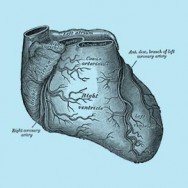
Off-Pump Coronary Artery Bypass Grafting (OPCABG)
Background
Coronary artery bypass grafting (CABG) is a surgical procedure for ischaemic heart disease, which is the most common cause of death in Western countries. In this disease the gradual build-up of fat and calcium within the arteries of the heart causes them narrow, which reduces the blood flow to the heart’s muscle. When the narrowing becomes very severe or completely blocked it causes a heart attack.
CABG involves bypassing these blockages using a graft. The graft goes around the blocked artery to create new pathway for oxygen-rich blood to flow to the heart again. The aim of this is to relieve symptoms (including angina), help the patient resume a normal lifestyle, and to prevent the risk of heart attacks or other heart problems.
About the surgery
A general anaesthetic is used. First the surgeon prepares the graft(s), which can be either an artery or vein or a combination. These come from multiple places, including inside the chest (the internal mammary arteries), leg (saphenous vein), forearm (radial artery) or stomach (gastroepiploic artery). At Sydney Heart & Lung Surgeons arteries are preferred (a “total arterial” approach), because they have been shown to last longer than vein grafts.
Sewing the grafts to the heart is traditionally performed on a still, non-beating heart whilst the patient is on a heart-lung machine (“on-pump surgery”). Alternatively, it can be performed on a beating heart without the heart-lung machine, using a small stabiliser (Figure 1). Since the heart-lung machine is not needed, the large vessels of the heart do not need to be manipulated (an “anaortic” technique). There is evidence that this lowers the risk of stroke and subtle neurological injury, and in particular benefits elderly and high-risk patients. Other outcomes are similar to traditional on-pump surgery. Sydney Heart & Lung Surgeons are experienced in this technique.
Recovery period
For a while after the surgery, patients may feel worse than they did before surgery. This is normal and is usually related to the trauma of surgery, not necessarily to the functioning of the heart. Patients usually stay in the intensive care unit for 1 – 2 days for monitoring, and then in the nursing unit for 4 – 5 days. Two to three tubes stay in the chest to drain fluid from around the heart, which are usually removed 1 – 3 days after the surgery. Full recovery usually takes about 2 months. Most patients are able to drive in about 3 to 8 weeks after surgery. Your surgeon will provide specific guidelines for your recovery and return to work.
Risks of the surgery
As with all surgery, CABG is associated with some risks. In the short term after the operation these include wound infection, bleeding, kidney injury, stroke, heart attack, and possibly death. Your surgeon will calculate these risks specific to you, and discuss them with you.
For more information please visit:
Society of Thoracic Surgeons CABG
All patients should consult their cardiothoracic surgeon for specific information about their medical condition and surgery.

